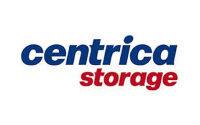Viking CCS
Viking CCS is a CO2 capture, transport and storage network expected to be operational from 2027 and targeting a reduction of 10 million tonnes of UK emissions per annum by 2030 and up to 15 million tonnes per annum by 2035. Working together with our key industrial members, the cluster is set to deliver investment of up to £7bn from 2025 to 2035. Located in the Humber, the UK’s most industrialised region and largest emitter of CO2, the project is central to establishing a world-leading CCS industry in the UK and meeting the Government’s 2050 net zero emissions targets.
2 min read

Harbour Energy, the largest London-listed independent oil and gas company, leads the project. Working with a wide range of Cluster members including Associated British Ports (ABP), Phillips 66 Limited, RWE, VPI and West Burton Energy, the capture, transportation and storage network will promote inward investment and attract new industries to the area. The project will reuse existing pipelines and decommissioned gas fields in the Southern North Sea to provide UK industries with a competitive option for the transport and storage of their CO2 emissions.
Harbour Energy is developing two key pieces of infrastructure that anchor the project. The new Viking CCS onshore pipeline will enable captured CO2 from the Immingham industrial area to be transported for 55km to the site of the former Theddlethorpe Gas Terminal on the Lincolnshire coast. From there, reusing an existing offshore pipeline, the C02 will be transported 140 km to the depleted Viking gas fields. It will then be injected 9,000 feet (2.7km) beneath the seabed for secure permanent storage. These reservoirs have 300 million tonnes of initial storage capacity and a caprock ‘superseal’, hundreds of feet thick, which creates a high-strength barrier that locks away CO2 permanently.
In addition, Viking CCS is working with Cluster member ABP - operator of Immingham, the UK’s largest port by tonnage - to develop a CO₂ import terminal at the Port of Immingham. The terminal will be operational and ready to receive first cargoes of CO2 imports from as early as 2027. This will help solve the challenge facing emitters without ready access to a CO2 pipeline by providing a viable solution for stranded UK and imported CO₂ emissions from industrial businesses.
The project could have a transformational impact on inward investment, jobs, skills and overall prosperity in the region. Jobs will peak during the construction phase, with a long-lasting supply chain impact as we operate over the coming decades, creating opportunities at all skill levels across many sectors. It has been estimated that decarbonising industries in the Humber provides a route to safeguard over 20,000 jobs. Overall, we calculate that £4 billion of gross value add (GVA) will be added to the region by 2030 across the CCS industry chain (including capture and storage).
Contact
Invest Humber: Clean Growth in the UK’s Energy Estuary was created and is managed by Future Humber.
Future Humber promotes the region's distinctive strengths to the widest audience and accelerates opportunities to unlock the potential in the Humber.
Diana Taylor is the Managing Director of Future Humber. She is responsible for guiding the vision and strategy to market the Humber to the UK, Europe, and beyond. Diana works with partners and stakeholders to build the voice of the region and enable businesses and organisations within the Humber to succeed and grow.
If you have a question about Invest Humber or would like to find out more about any of the projects included on the website, you can contact Diana below.








